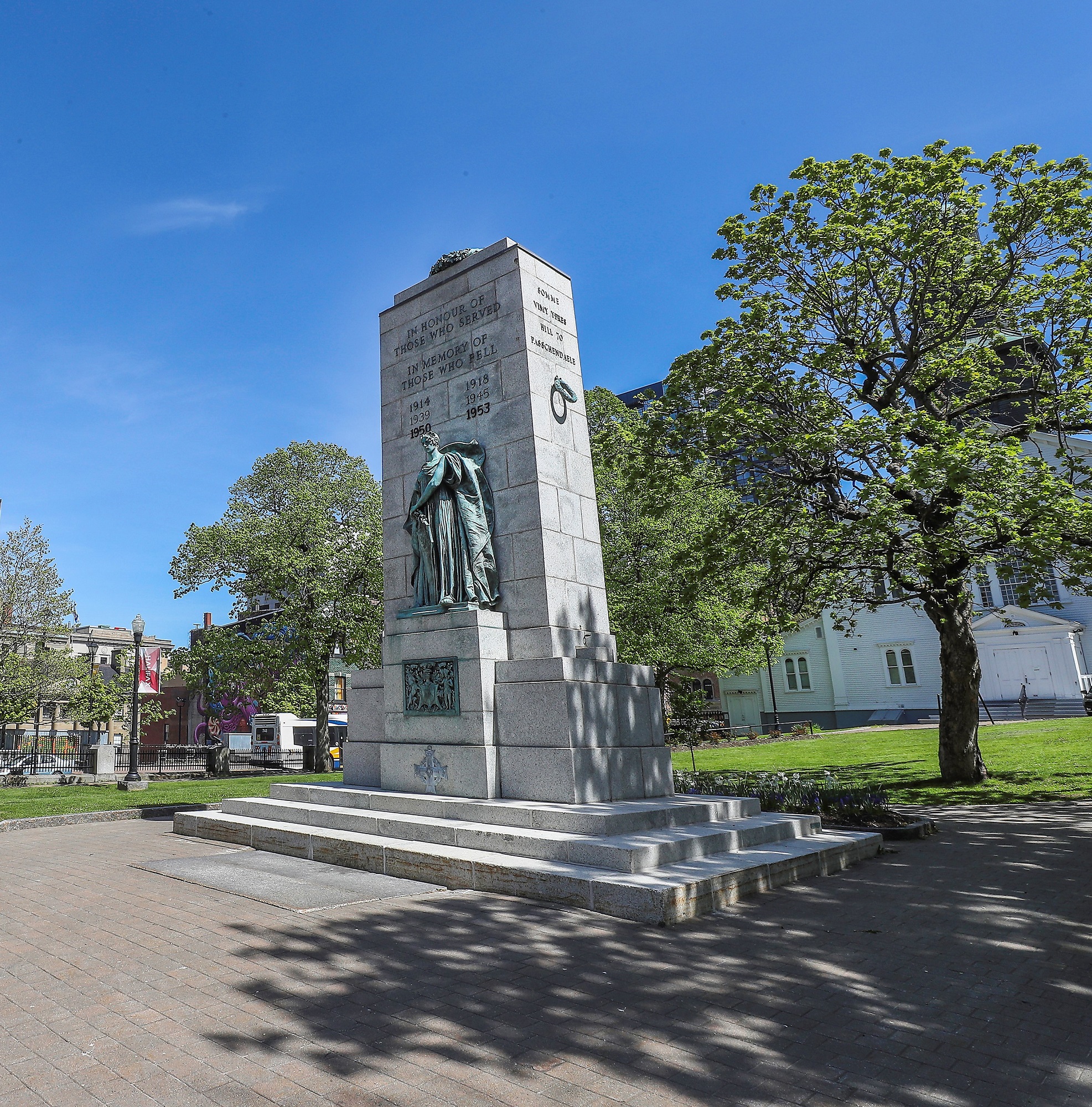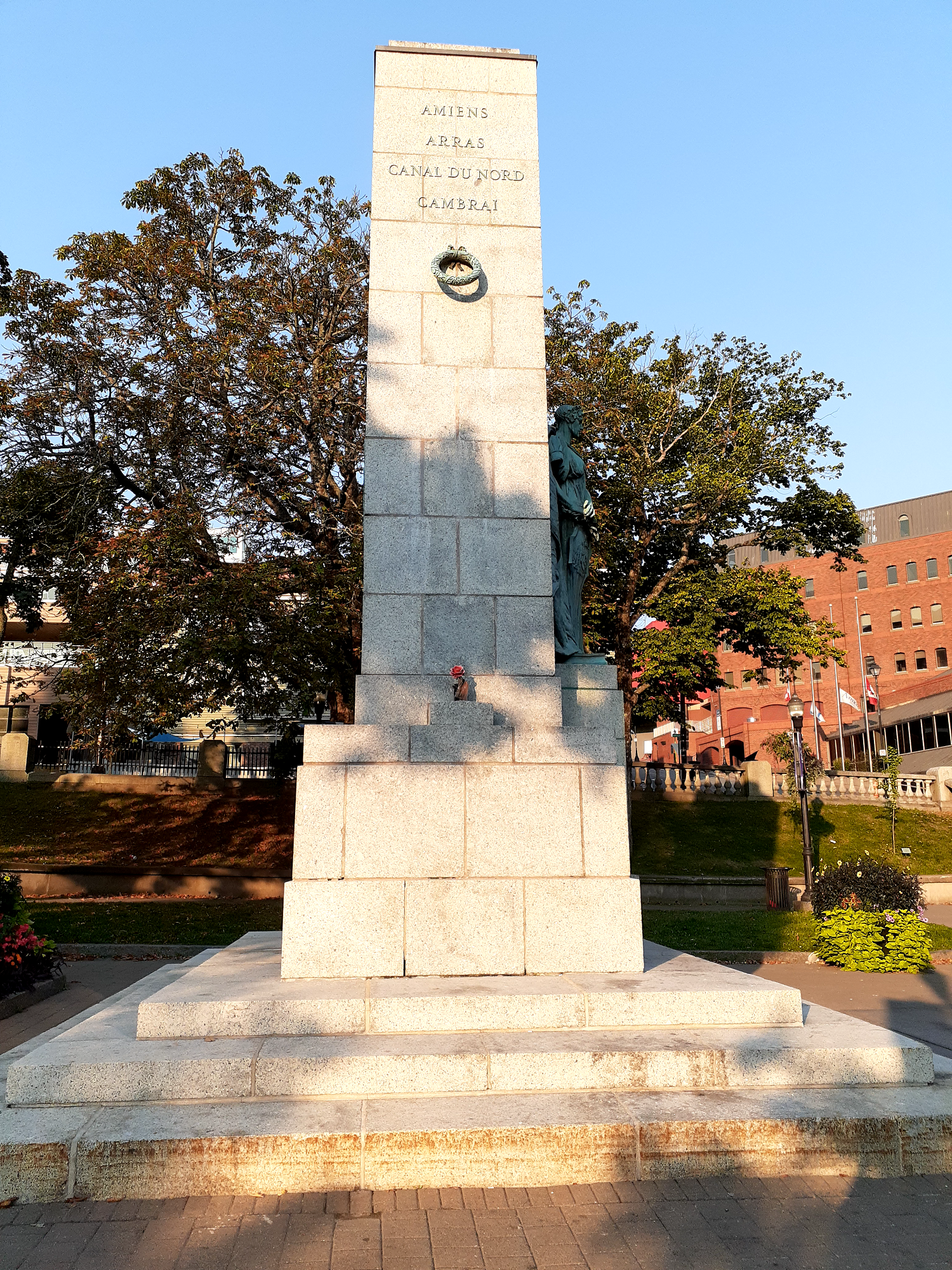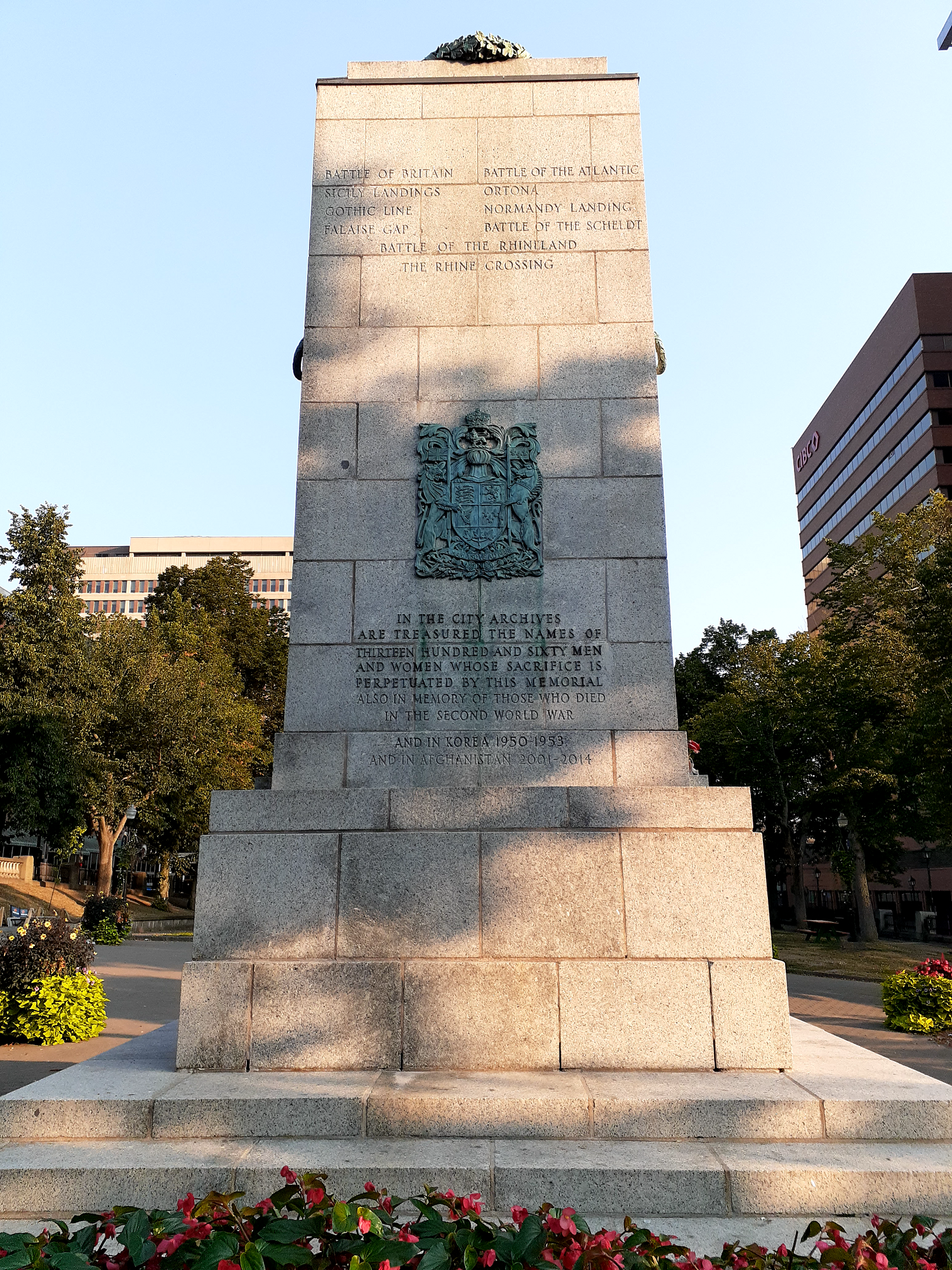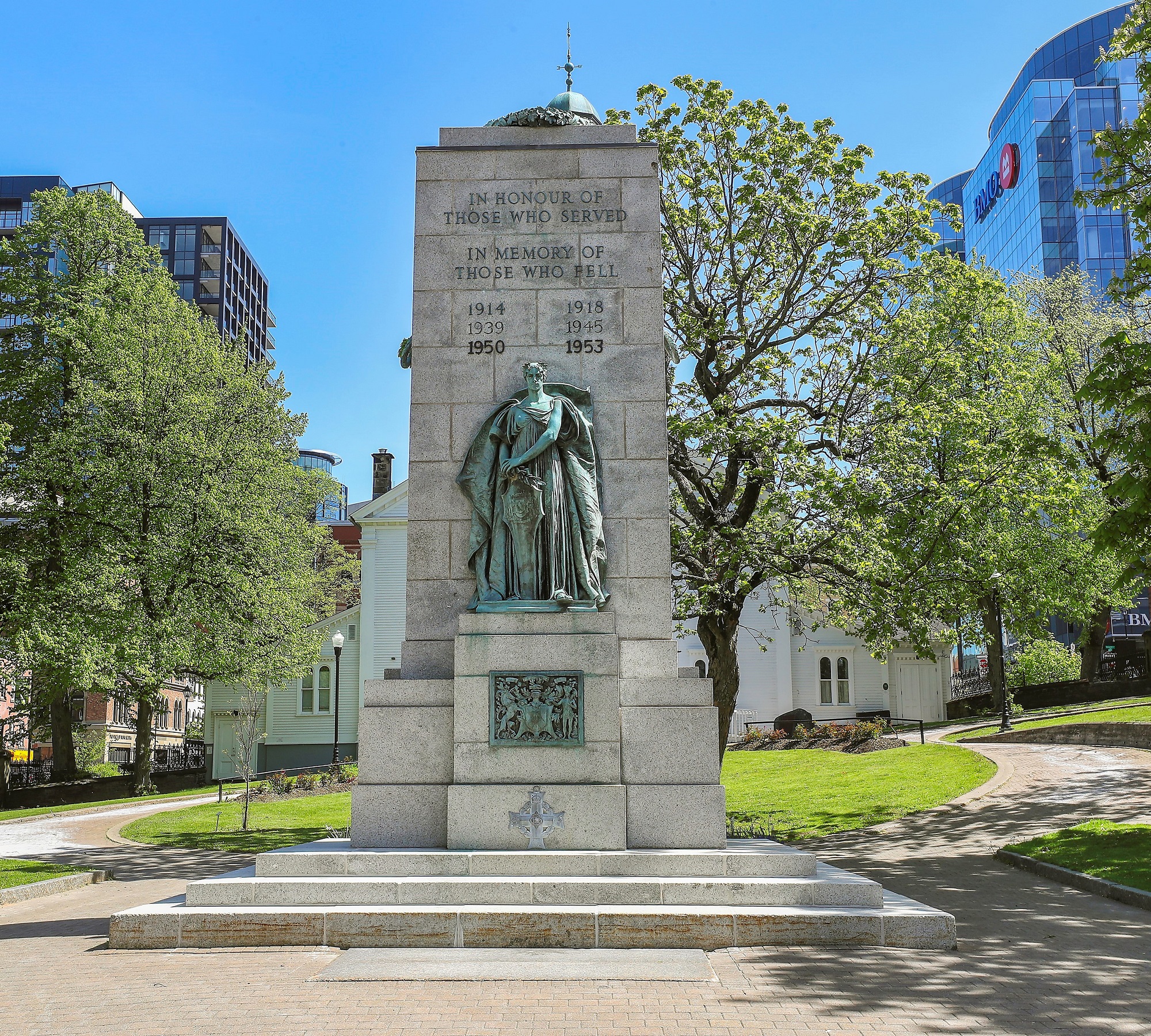The Halifax Grand Parade Cenotaph was unveiled and dedicated on 1 July 1929, by former Prime Minister, Robert Borden. It commemorates Halifax's 1360 men and women who had died in the Great War. Thousands lined the rails around the Parade and crowded into surrounding streets, even mounting roof tops seeking better vantage points. At two minutes of 11 o'clock, a single gun sounded from Citadel Hill, followed by two minutes of respectful silence. The oration was given by then Minister of National Defence, James Layton Ralston. He commanded the 85th Battalion, known as the Nova Scotia Highlanders, during the war. He was a Colonel in the Canadian Armed Forces when he was also President of the Rotary Club of Halifax in 1922.
The Grand Parade, sometimes incorrectly referred to as Parade Square, is an historic military parade square dating from the founding of Halifax in 1749. Through the efforts of the War Memorial Committee, the cenotaph was originally erected in the middle of the Grand Parade to commemorate the soldiers who served in the First World War. The Committee consisted of members of several Halifax Societies and City of Halifax Aldermen. Funding for the construction was derived from citizen donations, Committee fund-raising efforts and a grant from the City of Halifax.
The sculpture was designed by J. Massey Rhind, a Scottish-American sculptor. He began his studies under his father then attended the prestigious Royal Scottish Academy as a 15-year old prodigy and continued his studies with Jules Dalou in Lambeth, England. He continued his studies in England, then two more years in Paris and moved to New York in 1889 when he was 29. After the First World War, Rhind lived in Chester, Nova Scotia. He developed a love for the area and decided to design and donate this memorial that stands on the Parade Grounds today. His work in Nova Scotia includes the New Glasgow Cenotaph, Chester Cenotaph and Cornwallis Statue.
The cenotaph is nine-meters tall, the granite is Nova Scotian and the original elements are all cast bronze. The sculpture on the cenotaph depicts a victorious but grieving Britannia representing Nova Scotia’s mothers. Known as the Highlander, the bronze figure was valued at $6,500. Russell Zinck was chosen to model for the Highlander as he was perceived to have a face representative of the people of the area. The base and steps of the memorial were donated by the village and cut from a single piece of granite by Wakefield Zinck. At the base of the cenotaph is the Canada Coat of Arms with the Silver Cross below it. There is a large laurel leaf at the top of the back of the cenotaph, and bronze laurel leaves on each side of the cenotaph.
After the Second World War, the cenotaph was rededicated and inscriptions were incised in the granite in a font similar to the 1929 bronze text. The rededication/inscription date is not known. After the Korean War, an inscription was incised on the rear of the cenotaph below the Second World War inscription. The rededication/inscription date is not known. The Korean War dates were added to the front in 1986. In 2015, the Afghanistan Conflict inscription was added to the back of the cenotaph. On October 17, 2010, a concrete arch was unveiled as a memorial to peace officers killed in the line of duty.



